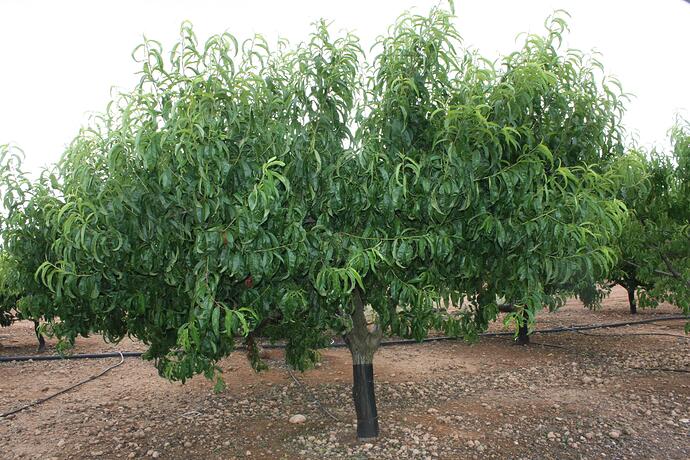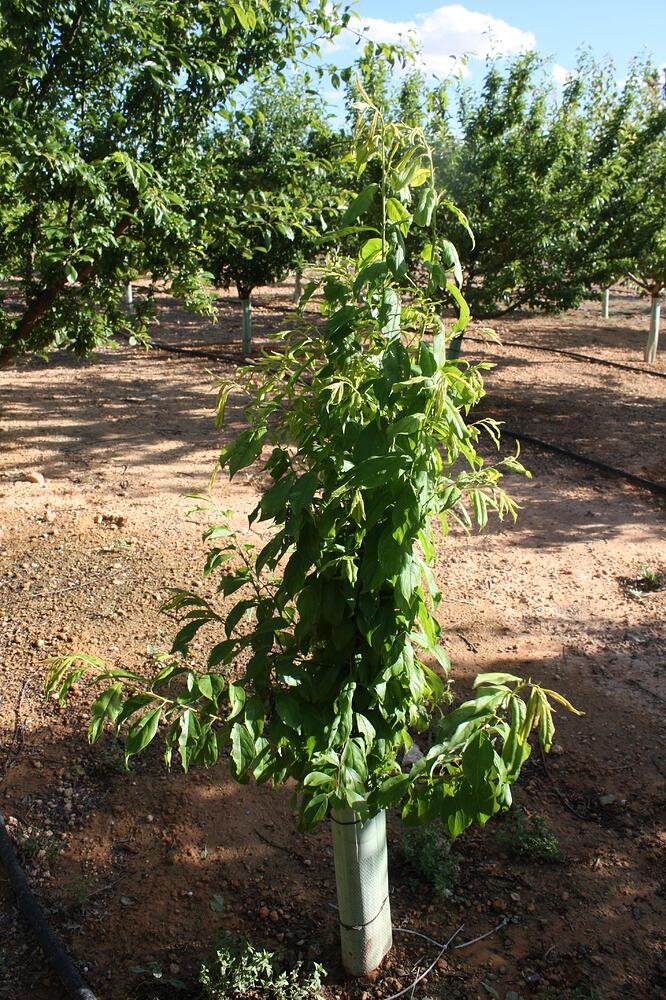Darrell, if I understand you correctly, what you suggest is the following:
Since the Riversade rootstock seedlings are obtained from seed selection, due to genetic variability some of them may be more vigorous and faster in growth than others, so you recommended , for example in an amount of 100 rootstocks, to place the plants in deep pots suitable for the rootstock taproot, and make a selection of 70% of the most vigorous and fast growing rootstocks and discard 30% of the less vigorous and slower growing rootstocks.
Please tell me if I have understood it correctly, since this would be very easy to do, and we would have selected the most vigorous rootstocks with rapid growth.
Hi Paul.
I am glad that you like my fruit orchard, it is the fruit of the work of more than 20 years, making tremendous mistakes and learning a lot from them, reading a lot of information, and due to a tremendous passion for fruit trees.
My first big mistake.
When we implanted the wastewater treatment plant in my business, it was mandatory to plant trees to use them as a “green filter” using the treated water for irrigation.
I told my father that instead of planting poplar trees that only produce shade, we could plant “Juglans Regia” walnut trees to have good walnut crops.
At that time (30 years ago), I did not know absolutely everything about fruit trees, and in a nursery we bought 100 walnut trees.
So far , the movie is perfect.
The walnut “Juglans Regia” is a fruit tree that is delicate, from the choice of the type of rootstock depending on the type of soil, as well as the choice of varieties resistant to sun stroke (Chandler grafted on a suitable rootstock, it would have been a magnificent choice ), but what we bought were 100 frank walnut trees (born from walnut seed ) and without grafting hahahahaha.
In the first year 50% died, and the rest died in the second and third year hahahahahahaha.
Then I understood that it was necessary to read a lot before planting a fruit tree.
I currently have my walnut trees, Chandler as a fruiting variety, and some Fernette trees , as a Chandler pollinator variety, grafted onto rootstock “MJ-209 xRA” .
The Chandler variety loves scorching sun, and has no sun stroke leaf scorch problems, and the rootstock MJ-209 xRA (Juglans regia x Juglans Nigra hybrid selection) gives it great resistance to root asphyxia problems, resistance to active limestone, and gives the tree tremendous vigor.
For this reason, before making a pecan plantation, I want to be sure that I am going to make it the best possible way.
What you say about graft protection is very interesting, and it is a practice widely used by me in some fruit varieties.
I’m going to show you some pictures.
This is the front part of the graft pots that are in my yard (about 700 rootstocks), and although it looks like Israel’s “iron dome” anti-missile shield hahahahahaha, it fulfills a very different role.
The grow tubes are for grafting excellent varieties of seedless grapes.
The young initial sprouting of the vineyard is extremely sensitive to solar radiation, and if a grow tube is not placed on each plant, the sun will burn the sprouting and the grafts will die.
The grow tube offers many advantages to plants that are difficult to graft, because it creates a very stable indoor microclimate, protects the plant from drying out by the wind and the sun, and prevents breakage caused by vermin and birds.
I use micro-perforated grow tube of 75 centimeters high (there are much larger ones).
These are two perfectly consolidated grape grafts.
I graft the vine onto the 140 Paulsen rootstock, which is the appropriate rootstock for my terrain and vigorous for seedless grape varieties.
Logically if we do everything right, it is necessary to choose good varieties, I show you two of them
This year I have grafted 15 different varieties, in the quality of the ones I show you.
So “YES”, I believe that placing a grow tube in the most youthful state of pecan plants can contribute to success.
If all goes well, my future pecan plantation will be a success.
And " YES " , I really enjoy growing fruit trees.
Regards
Jose































